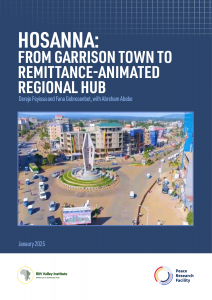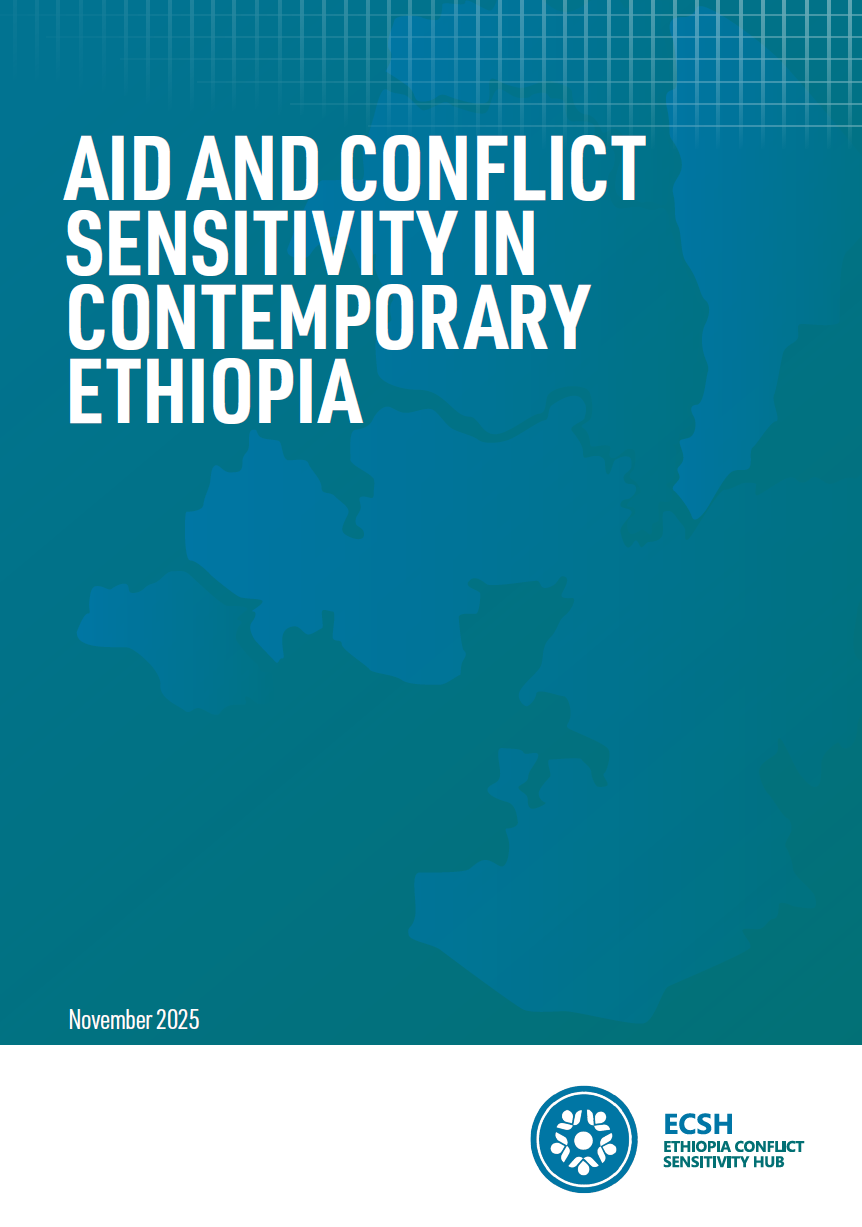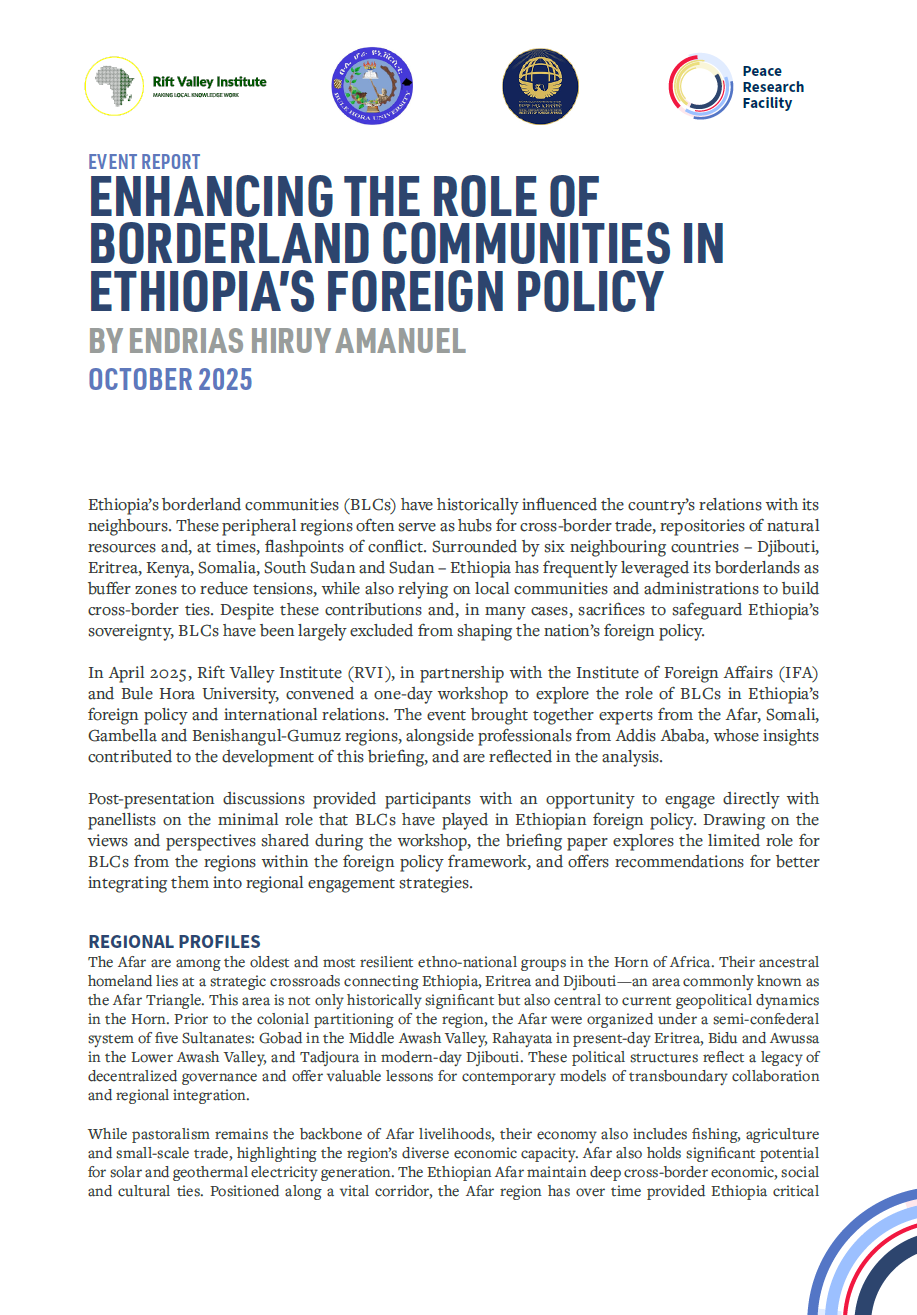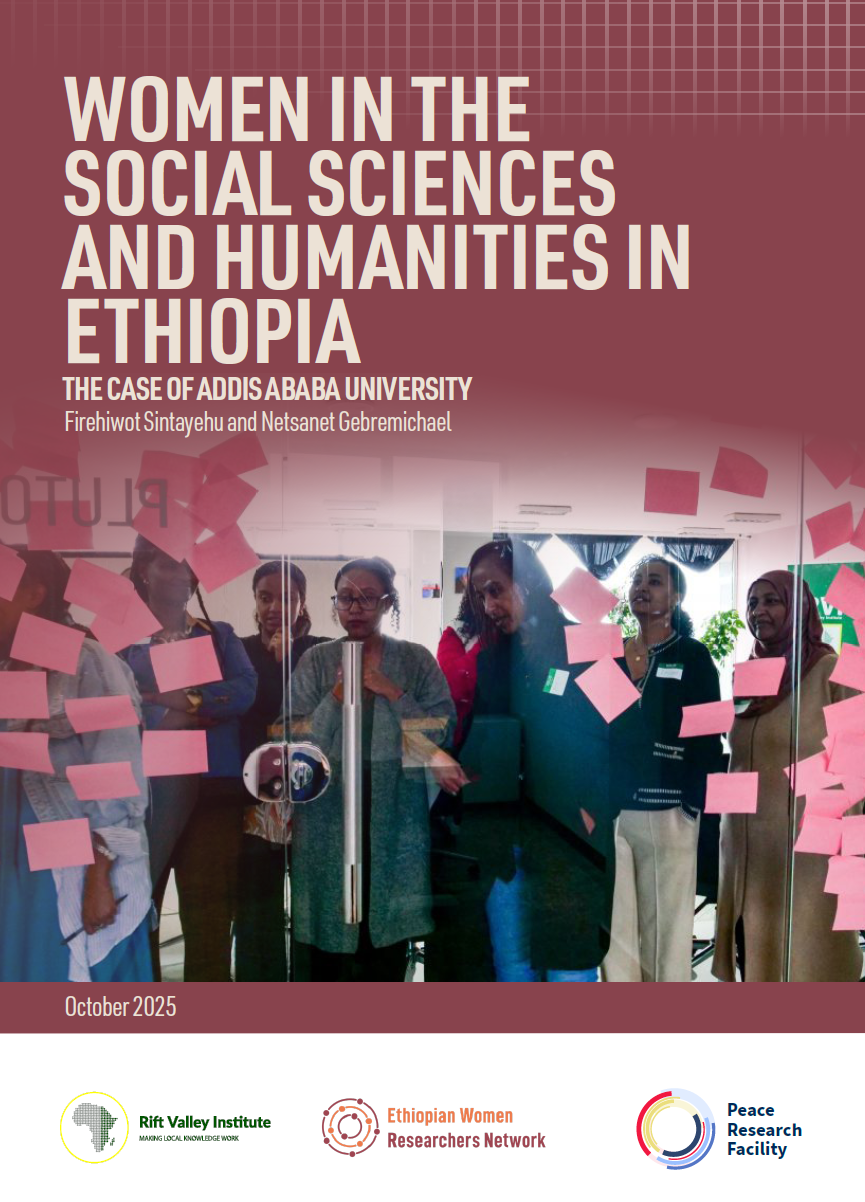Dereje Feyissa and Fana Gebresenbet, with Abreham Abebe
This report offers a case study of the contestation for ownership and control of key urban resources in Hosanna, located in the Hadiya zone of the newly formed Central Ethiopia Regional State (CERS).
It examines the urbanization processes and the shifts in social and economic power from previously dominant groups to formerly marginalized local populations, with the migration of ethnic Hadiya to South Africa playing a crucial role in these recent transformations.
In Hosanna, the primary sources of contestation are intra-ethnic (within the Hadiya community) and inter-religious. Although these disputes can be serious, they are generally non-violent. This stands in contrast to other regions, where contested urban spaces have experienced more serious unrest.
The study identifies four interrelated forms of contestation linked to urbanization in Hosanna:
- Gentrification tensions: This involves new Hadiya economic elites, primarily those who have benefited from international migration, acquiring urban housing plots in central Hosanna from non-Hadiya. In a reversal of historical trends, the sellers relocate to the city’s periphery.
- Land conflicts in peri-urban areas: The constitution reserves land ownership for the state and the peoples of Ethiopia, granting individuals only usufruct rights. Rapid urbanization has often disadvantaged peri-urban communities, forcing families into informal settlements. In the areas surrounding Hosanna, the economic gains from migration have led to intra-ethnic disputes between the Lemo and Soro clans of the Hadiya. Significant rural-to-urban migration has intensified peri-urbanization, with Lemo farmers facing pressure—whether through enticement or coercion—to sell their land in informal transactions. This trend is impoverishing these farmers and fuelling tensions with their Soro clan counterparts in Hosanna. Urban growth strategies in Ethiopia typically rely on the government’s compulsory acquisition of peri-urban land, evicting farmers and other property owners for the sake of development. However, on Hosanna’s fringes, significant expropriation has not occurred. Instead, an informal land market thrives, with Hadiya farmers selling land to speculators, often returned migrants from South Africa. This has resulted in rapid, unplanned expansion into neighbouring Lemo woreda and long-term dispossession of farmers, as transactions tend to be unequal.
- Public space and cultural contestation: The clash of revived Hadiya cultural practices with Protestant and Orthodox Christian traditions has intensified competition over public spaces in Hosanna. The neo-traditional revival, which serves as a major platform for Hadiya nationalism, has led to fierce struggles, particularly over the reclaiming of Gofer Meda—renamed Hadiyy Nafara (meaning ‘the lung of Hadiya’). This dispute has sometimes escalated into violence.
- Regional capital dispute: The contest over the location of the capital of Central Ethiopia Regional State (CERS) involves rivalry between the Hadiya and Gurage. The current multi-city approach designates Hosanna as the seat of the regional state presidency and Welkite as the seat of the regional council. The Hadiya’s claim to Hosanna as the regional capital has sparked new political aspirations, including the Greater Hadiya project. This aims to reclaim lost territories and revive historical alliances from the era of the Hadiya Sultanate, positioning the Hadiya in direct conflict with Gurage nationalists over regional boundaries.
This report was written for the Ethiopia Peace Research Facility (PRF) and is part of its Knowledge for Peace (K4P) series on contested urban spaces. The PRF is an independent facility combining timely analysis on peace and conflict from Ethiopian experts with support for conflict-sensitive programming in the country. It is managed by the Rift Valley Institute (RVI) and funded by the UK government.
Please find an Amharic version of the summary here.




